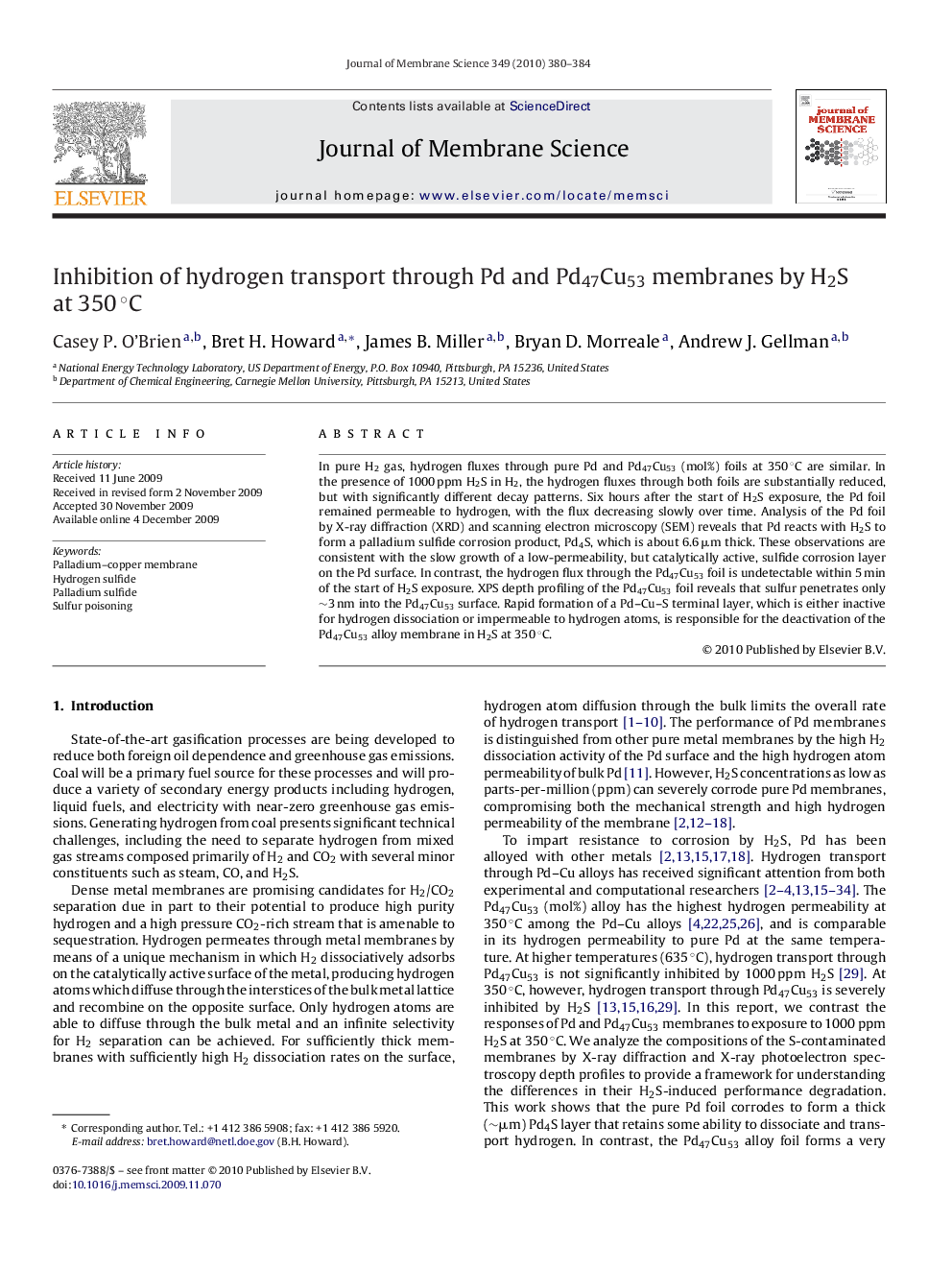| کد مقاله | کد نشریه | سال انتشار | مقاله انگلیسی | نسخه تمام متن |
|---|---|---|---|---|
| 636617 | 1456130 | 2010 | 5 صفحه PDF | دانلود رایگان |

In pure H2 gas, hydrogen fluxes through pure Pd and Pd47Cu53 (mol%) foils at 350 °C are similar. In the presence of 1000 ppm H2S in H2, the hydrogen fluxes through both foils are substantially reduced, but with significantly different decay patterns. Six hours after the start of H2S exposure, the Pd foil remained permeable to hydrogen, with the flux decreasing slowly over time. Analysis of the Pd foil by X-ray diffraction (XRD) and scanning electron microscopy (SEM) reveals that Pd reacts with H2S to form a palladium sulfide corrosion product, Pd4S, which is about 6.6 μm thick. These observations are consistent with the slow growth of a low-permeability, but catalytically active, sulfide corrosion layer on the Pd surface. In contrast, the hydrogen flux through the Pd47Cu53 foil is undetectable within 5 min of the start of H2S exposure. XPS depth profiling of the Pd47Cu53 foil reveals that sulfur penetrates only ∼3 nm into the Pd47Cu53 surface. Rapid formation of a Pd–Cu–S terminal layer, which is either inactive for hydrogen dissociation or impermeable to hydrogen atoms, is responsible for the deactivation of the Pd47Cu53 alloy membrane in H2S at 350 °C.
Journal: Journal of Membrane Science - Volume 349, Issues 1–2, 1 March 2010, Pages 380–384